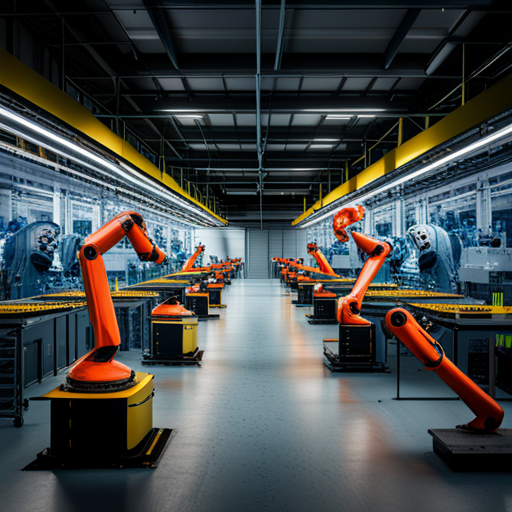In my two decades tracking the IT asset disposition and electronics recycling sectors, I had the opportunity to visit dozens of ITAD facilities, from Upstate New York to Central Mexico. The tasks of these sites have always been the same, essentially comprised of asset inventorying and sorting, data sanitization, asset testing and refurbishment, component recovery, and in some cases e-waste recycling.
I have always been rather surprised to see that those facilities were not as labor intensive as I thought. Before my first visit to a site near Las Vegas, I expected a hive of activity, but that was not the case. This is largely because ITAD companies managed to implement as much automation as possible.
There was one exception in my site visits and that was a facility down in Aguascalientes in north-central Mexico, where ITAD operations specific to large multi-function peripherals (that is big enterprise printers and copiers) boasted a massive number of workers. At the end of the day shift, dozens of buses drove the workers back to their homes, and that was a big difference from what I saw in US facilities. It is possible that such labor profile in the Mexican plant may have been mandated by national and local labor laws to create jobs. But in general, one senses that ITAD companies have been capable of optimizing their facilities.
Yet, labor is still a key component of an ITAD operation, with staff involved in all sorts of tasks. In 2023, the various surveys we, at Compliance Standards, conducted suggested that some ITAD vendors struggled with labor issues, from lack of available labor pool to its relatively high cost. However, in the near future, we expect the need for basic labor will be reduced, and we should expect to see a shift to specialized technicians and engineers who may not have to perform any manual tasks but will work as supervisors and pilots of the next generation of plants. Most of the labor will be comprised of robots.
In a sector where margins tend to be thin, it makes sense that optimizing the IT assets treatment and recycling facility is critical for maximum productivity and performance. And in this case, the companies that supply machinery and equipment to ITADs are also doing their homework to deliver best-in-breed machines such as shredders, balers and compactors, disk degaussers, environmental control systems, testing and diagnostics equipment, refurbishment and disassembly tools, etc.
As companies are increasingly pressured to report on their ESG achievements, we are likely to witness such pressure to shift to the ITAD sector, so as to force ITAD vendors to comply with their clients’ own ESG requirements. Up until now, the ITAD sector has been hampered by a lack of attention among its corporate clients. Evidence of that is the fact that in 2019, Morgan Stanley spent more than $7 billion in its IT infrastructure, but failed to pay attention to its IT equipment recycling, costing it probably more than $160 million in fines for having neglected the end of life of its IT equipment. We are now at the stage where companies’ ESG pledges require them to take a closer look at their ITAD programs and that’s both good and bad news for the ITAD industry. Bad because ITAD leaders will need to adjust fairly quickly, and that could be disruptive, but also good because that will bring the sector out of the shadow.
As of now, there are still many unanswered questions as to how prepared the ITAD industry is to scale up if customers require more of them on the ESG front. Some of my ITAD clients tell me they are ready; others admit they have no answer to that question. Some argue that since they are at the tail-end of the technology curve, they are not too worried yet. But they should!
One of the biggest unknowns from the perspective of ITAD industry executives is the impact AI will have on their business. I heard the same argument from many executives that “it makes no sense to worry now since we may be three to four years behind the latest technology.” This is not a logical argument because it is not just about the devices that are collected but also about how the industry itself functions.
Let me take the example of tomorrow’s ITAD facility. There is no doubt that in a very short period of time we will see facilities that are entirely managed by a new generation of robots whose brain will be powered by Artificial Intelligence. And this is not the domain of science fiction or even an event that will happen in three years. It is happening now. Consider what NVIDIA is offering right now (see video at the bottom of this analysis). Two technologies that are going to revolutionize the way industrial facilities will run are already being tested and deployed by a dozen companies. NVIDIA has two sets of technologies that are working together to reinvent the factory. They are called Digital Twin and Omniverse 3D. The first enables virtual representation of sites and the physical world, essentially reproducing layouts, functions, operations, and characteristics, with the purpose of mirroring your site into a digital platform, for example. The second set of technologies, known as Omniverse 3D, would take what Digital Twin captures for the purpose of creating and simulating that facility in a three-dimensional virtual environment. So that these platforms do is to identify weaknesses and rearrange the facility, enhance its technological profile and get it managed by intelligent robots.
Setting aside the complex technical explanations of what this dual platform does, one would say this is the thing of the future. Except it is not. At least 12 companies have already jumped on the opportunity to redesign their plants based on NVIDIA’s AI platforms. These companies are going to drastically alter their facilities and the ones they will design for the clients, with the help of digitally recreated models that are analyzed in 3D graphics formats.
Lucas Mearian, a Senior Writer at Computerworld, my former employer, says “the technology lays the ground for a future where autonomous factories run by AI-enabled robots can more efficiently make robots and other equipment by studying the inefficiencies of physical plants. Mearian quoted NVIDIA CEO Jensen Huang as predicting that “everything that moves will one day be autonomous.” Some of the world’s biggest engineering companies have joined the movement, including Siemens, Foxconn and Teradyne Robotics, and they are now busy reinventing the plant of the future, except that the future is already here.
The purpose of these efforts is to bring efficiencies that only robots and AI can collectively achieve in plants, warehouses and distribution centers. NVIDIA is careful when it uses terms that are complementary to labor instead of using a narrative that hints of ‘labor replacement.’ We see terms like “safer environment for their human coworkers” or “assistants for repetitive or ultra-precise tasks.”
In the ITAD sector these kinds of AI platforms are expected to increase efficiency and productivity manyfold. Most ITAD companies are still not paying attention to this trend, but it will not take long before we see such advanced automation take hold in ITAD plants. There is no shortage of areas where such advanced technology can be introduced within the next three to five years. Some areas that could benefit from AI are:
Inventory and Asset Sorting: This is an area where there is greater use of labor, but AI and robotics will be more efficient than humans in inventorying and assessing incoming electronics, identify their conditions and categorizing them for upcoming treatment.
Data Erasure: This is another task that can be completely automated. Data sanitization is already benefiting from advanced processes coming from the likes of Blancco, but we should expect that sector to also amplify innovation based on AI and the kind of platforms created by NVIDIA. Advanced AI-powered data overwriting technologies will ensure that bullet-proof erasure is done and confirmed by intelligent machines without any human involvement.
Refurbishment: This task has been a cornerstone of ITAD, a necessary step to elongate the life of a device and place it back into the secondary market. Among the many refurbishers I engaged with, there is a rule of thumb that is important to follow and that is the fastest the refurbishment process, the most cost-effective is the operation. Spending too much time on such tasks could have an impact on the company’s finances, essentially in the form of higher operational and labor cost and reduced margin, and AI-powered robotics is expected to achieve optimum timing. Intelligent machines, which by the way will improve over time by training themselves, will be better equipped to handle the testing of assets to decide whether they should be refurbished, then perform the necessary repairs and hardware and software upgrades to extend the product’s lifespan.
ITAD operators should also expect their machinery suppliers to deliver systems that will meet their plant upgrades. We expect them to optimize their machine designs to introduce advanced automation that requires no use of human labor.
AI-powered machines will enable a more effective separation of parts and materials in electronic recycling. This is taking place now as engineers are testing new machine learning algorithms to better analyze and identify different components based on their specificities and characteristics. A number of companies that make these machines say they are working to leverage new image recognition algorithms, using cameras and sensors to capture images of electronic devices and parts, and advanced software to analyze these images, all done in an extremely fast pace and without human intervention.
For ITAD companies involved in the commodity market, machines are currently being engineered to identify the composition of the materials of the hardware, using advanced spectroscopy.
The list of tasks inside an ITAD plant that will be transformed by AI is long. It goes from complex spectroscopy to the basic tasks of maintenance and cleaning. But there is also the opportunity to optimize reporting. AI will alter the way ITAD companies and others in a plant environment will handle data analysis, as we predict the use of sensors will bring together AI and the concept of IoT front and center, let alone take over predictive pricing in the secondary market and interacting with the client’s data platform to monitor the movements of assets, for better security and compliance with data laws.
Now is this a futuristic vision that will take decades to achieve? Not at all, it is already here. NVIDIA is promoting it in an effort to penetrate a sector comprised of “10 million factories,” worth “$46 trillion” in value, according to NVIDA’s CEO. To do so, it offers five software platforms that are meant to stimulate your plant environment. And while most ITAD companies will not be ready to embrace such a revolutionary transformation of their work environment in the short term, we expect a few of them to jump on the opportunity to push the boundaries of productivity and automation. We even expect startups by young savvy entrepreneurs, to emerge and thrive in putting together such a plant within three to five years, backed by equity investors keen on placing their money in an interesting industry focused on sustainability.






